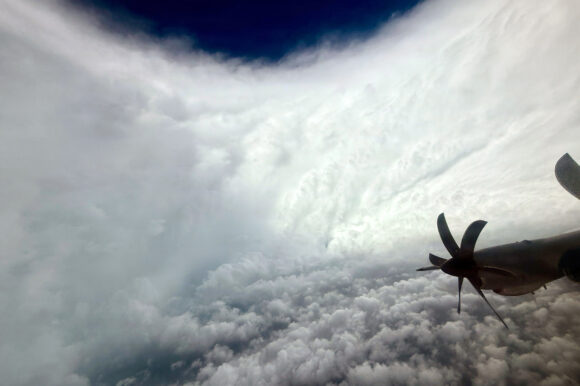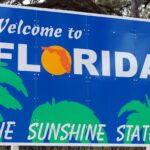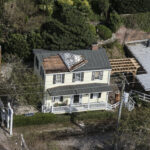Hurricane Melissa made landfall in Cuba less than a day after it became the strongest recorded storm to strike Jamaica, where it left hundreds of thousands without power and forced hospitals to evacuate.
Melissa crossed the coast in eastern Cuba as an “extremely dangerous” storm, the US National Hurricane Center said in a statement at about 3:10 a.m. Eastern Time on Wednesday. As much as 25 inches (63 centimeters) of rain and storm surges up to 12 feet (3.7 meters) above normal are expected.
Cuban officials were evacuating around 735,000 people ahead of the storm’s arrival on Wednesday morning, media reported. President Miguel Díaz-Canel Bermúdez called on citizens to “be alert, show discipline and not forget discipline in the face of this threat,” according to state newspaper Granma. More than 3,600 people also took emergency shelter in Haiti.
The storm is now a Category 3 on the five-step Saffir-Simpson scale with winds of about 120 miles (195 kilometers) per hour, the NHC said. It’s forecast to remain a powerful hurricane as it passes over Cuba and moves toward the Bahamas on Wednesday.
Melissa slammed into Jamaica with sustained winds of 185 miles per hour on Tuesday afternoon— making it a rare Category 5 hurricane at landfall and potentially the most destructive of the 2025 season. It struck near New Hope on Jamaica’s southern coast, about 25 miles south of Montego Bay, according to the NHC.
The situation in Jamaica remained too chaotic to provide a full, official assessment, according to Minister of Local Government Desmond McKenzie, who has been leading the emergency response. He said the damage has been widespread.
“This is one of the worst experiences that we have ever encountered,” McKenzie said in a televised statement on Tuesday. More than 500,000 citizens were left without power, while 15,000 were in shelters and three hospitals were severely damaged, he added.
President Donald Trump, who was traveling in Asia, told reporters that the US was monitoring the damage and “prepared to move” humanitarian assistance to Jamaica.
“It’s doing tremendous damage as we speak,” Trump said, adding that the storm was “knocking down everything in front of it.”
About 2,500 feet above sea level, Melissa’s winds clocked in at 215 miles per hour, according to measurements collected by hurricane hunter aircraft before landfall in Jamaica. In addition to the winds, the storm has brought days of flooding rain, putting residents and an estimated 25,000 tourists on the island at risk.
The hurricane is expected to result in property damages costing between $5 billion and $10 billion in Jamaica, according to an estimate by Cotality, a property intelligence company.
Households and small businesses are more vulnerable than hotels, and gaps in insurance coverage could result in “severe financial and social disruption,” according to Firas Saleh, director of insurance solutions for Moody’s.
Local media reported that Melissa hammered St. Elizabeth Parish, along the island’s southwestern coast. Images shared by the Jamaica Observer showed roofs being ripped off buildings and streets covered in raging floodwater. In the capital Kingston, there were reports of sporadic flooding and wind gusts tearing down billboards.
Jamaica’s Office of Disaster Preparedness and Emergency Management reported that roads in at least four parishes were blocked by trees and boulders, and a handful of bridges had been flooded out.
UN aid groups are preparing to deliver food and other supplies once the weather calms and Jamaica’s airports reopen, the agency said, adding that Haiti already has stockpiles on hand to assist up to 86,000 people.
The storm is forecast to move into the Bahamas on Wednesday, with heavy winds and rains picking up across Bermuda late in the week.
This is the strongest storm to hit land anywhere in the Atlantic since Hurricane Dorian struck the Bahamas in 2019 also with 185 miles per hour winds, said Phil Klotzbach, a hurricane researcher at Colorado State University.
While the data is spotty in places, there is no record of a storm this strong ever hitting Jamaica since 1851, Klotzbach said. Before Melissa, the most powerful storm to hit the island was Gilbert in 1988, as a Category 4 with winds of about 132 miles per hour.
Four Category 5 hurricanes have hit the US mainland, and only the Labor Day Hurricane of 1935 matched Melissa’s intense winds. The others, Camille in 1969, Andrew in 1992 and Michael in 2018 all lacked Melissa’s power, according to US National Oceanic and Atmospheric Administration records.
Melissa has already led to at least seven deaths across the Caribbean, including three in Haiti. The storm is endangering roughly 3.5 million people across the region, according to estimates from the United Nations’ and European Union’s Global Disaster Alert and Coordination System.
Photograph: In this handout image released by the U.S. Air Force, a crew flies through Hurricane Melissa, over the Caribbean Sea on Oct. 27, 2025; photo credit: U.S. Air Force
Was this article valuable?
Here are more articles you may enjoy.



 Acrisure CEO Greg Williams Makes $400M Commitment to Michigan State University
Acrisure CEO Greg Williams Makes $400M Commitment to Michigan State University  Viewpoint: Healthcare Cyber Insurance at an Inflection Point
Viewpoint: Healthcare Cyber Insurance at an Inflection Point  Surveys Show Concerns About Florida Market, But Consumers Are Warming Up
Surveys Show Concerns About Florida Market, But Consumers Are Warming Up  How ‘Super Roofs’ Reward Insurers, Cat Bond Investors and Homeowners
How ‘Super Roofs’ Reward Insurers, Cat Bond Investors and Homeowners 

